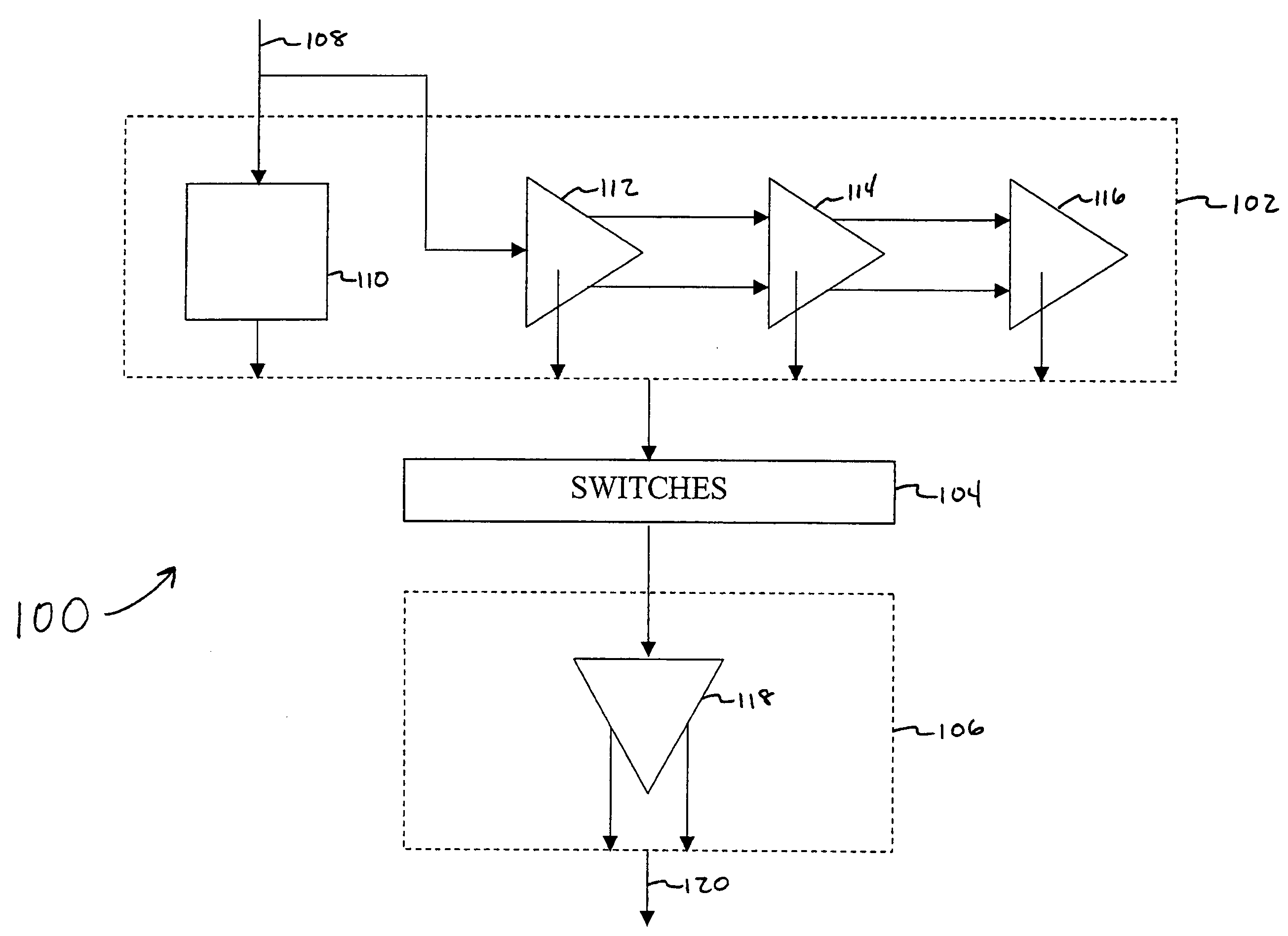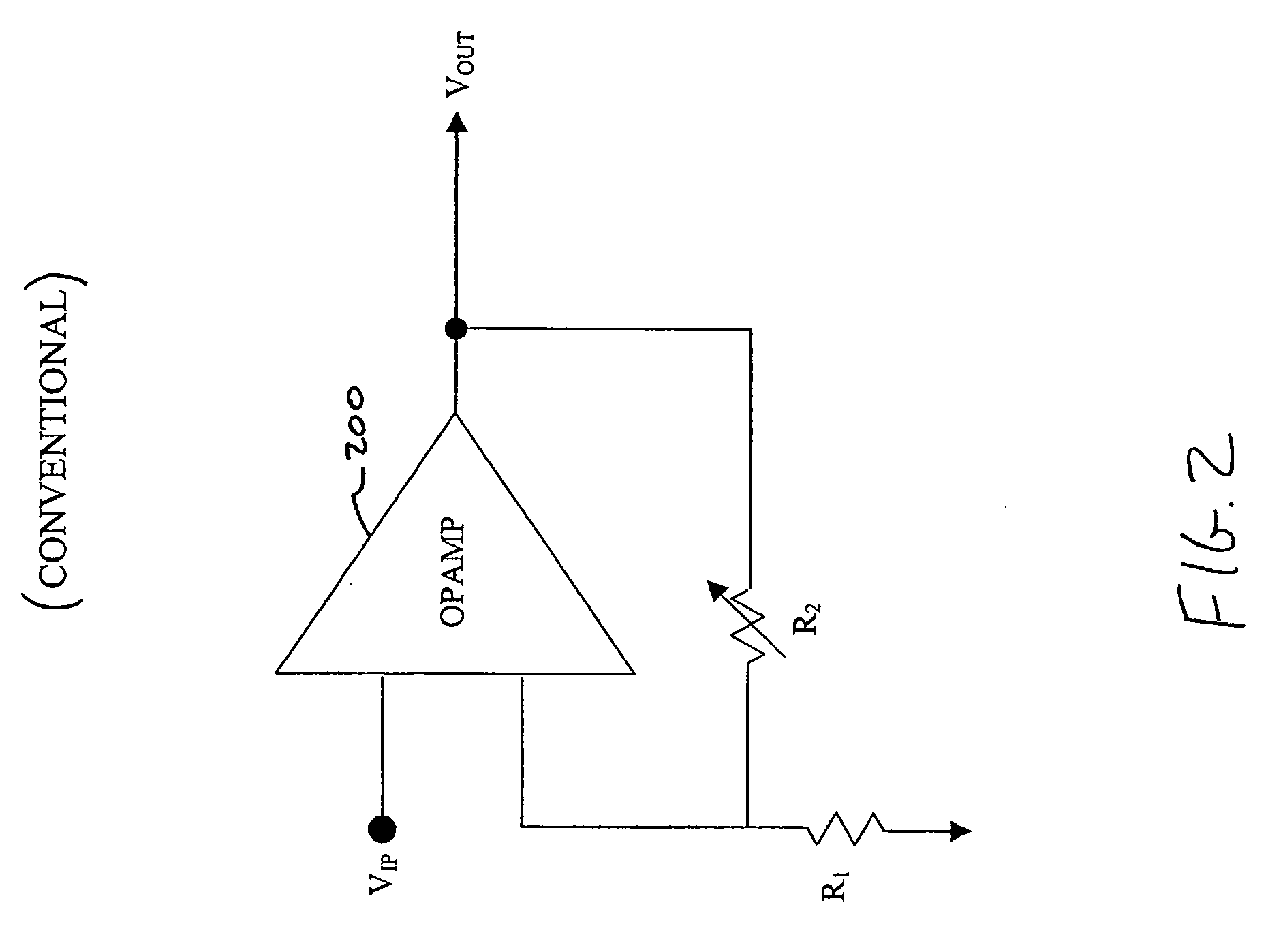Fine step and large gain range programmable gain amplifier
- Summary
- Abstract
- Description
- Claims
- Application Information
AI Technical Summary
Benefits of technology
Problems solved by technology
Method used
Image
Examples
Embodiment Construction
[0029] Although the examples contained herein typically refer to an increasing gain, one skilled in the art would recognize that the same techniques and systems may be used for decreasing gain.
[0030]FIG. 1 is a block diagram of a programmable gain amplifier (PGA) 100 according to the present invention. PGA 100 comprises a first stage 102, a plurality of switches 104, and second stage 106. First stage 102 amplifies or attenuates an input signal 108 in a stepped fashion. In an embodiment, first stage 102 comprises an attenuator 110 and amplifiers 112, 114, and 116.
[0031] Although three amplifiers are shown here, additional amplifiers may be added or subtracted. In other words, the system can include attenuators only, amplifiers only, or combinations of both. Attenuator 110 is connected in parallel to amplifier 112 so that input signal 108 is received in parallel.
[0032] Amplifiers 112, 114, and 116 are connected to each other in series.
[0033] In an embodiment, amplifiers 112, 114, ...
PUM
 Login to View More
Login to View More Abstract
Description
Claims
Application Information
 Login to View More
Login to View More - R&D
- Intellectual Property
- Life Sciences
- Materials
- Tech Scout
- Unparalleled Data Quality
- Higher Quality Content
- 60% Fewer Hallucinations
Browse by: Latest US Patents, China's latest patents, Technical Efficacy Thesaurus, Application Domain, Technology Topic, Popular Technical Reports.
© 2025 PatSnap. All rights reserved.Legal|Privacy policy|Modern Slavery Act Transparency Statement|Sitemap|About US| Contact US: help@patsnap.com



